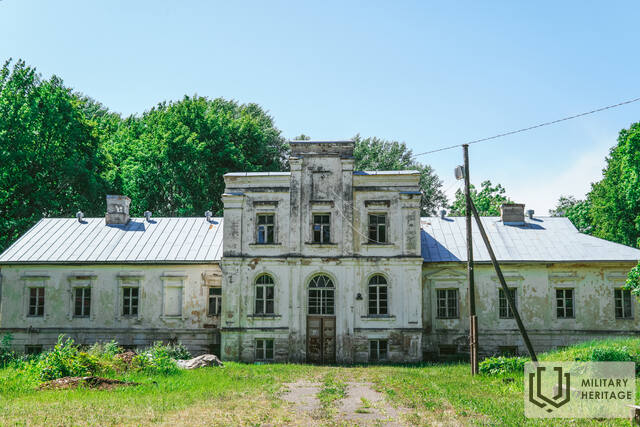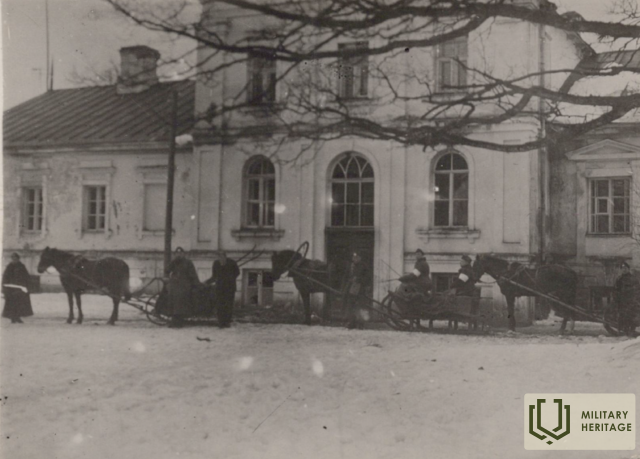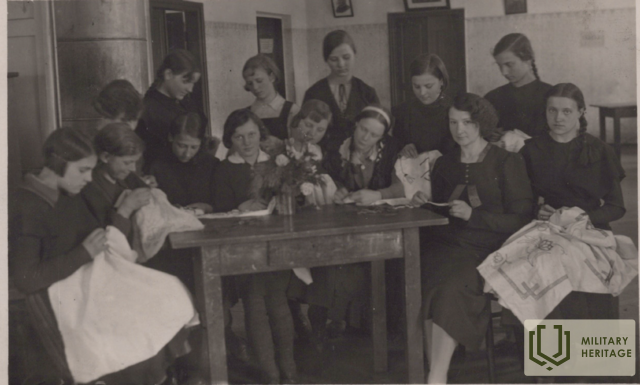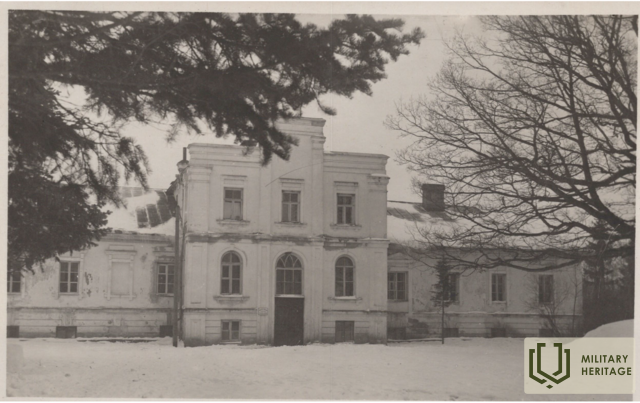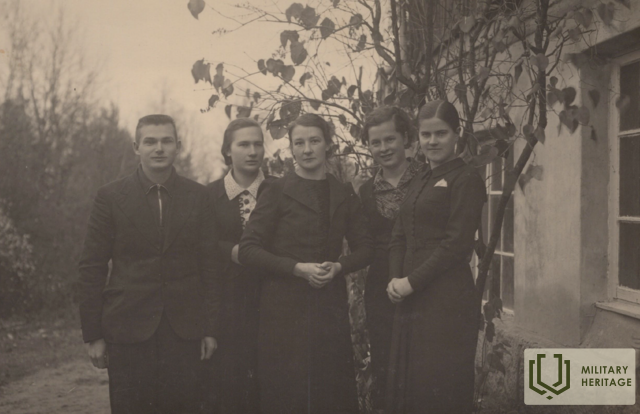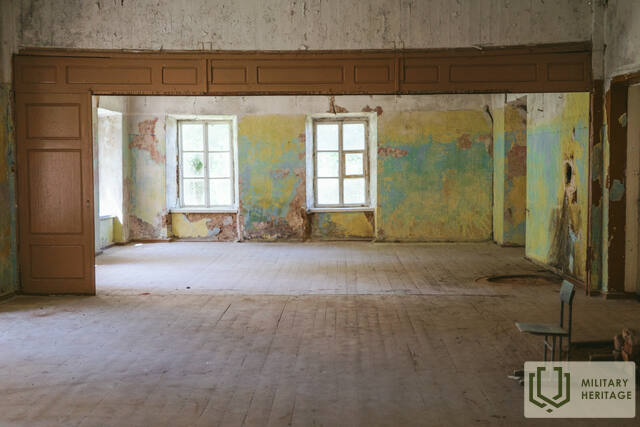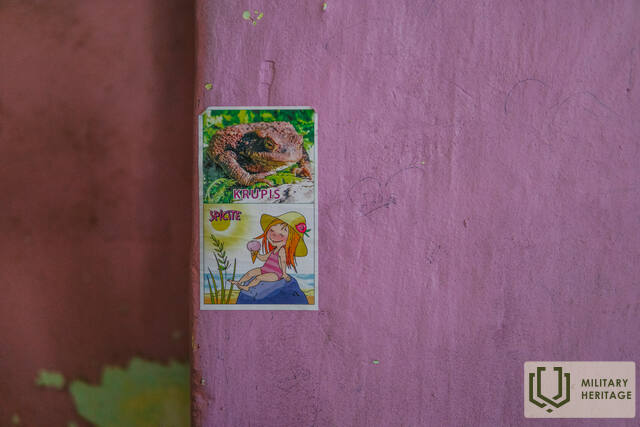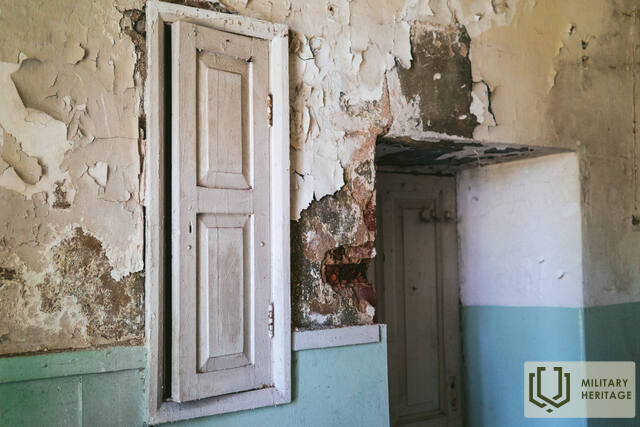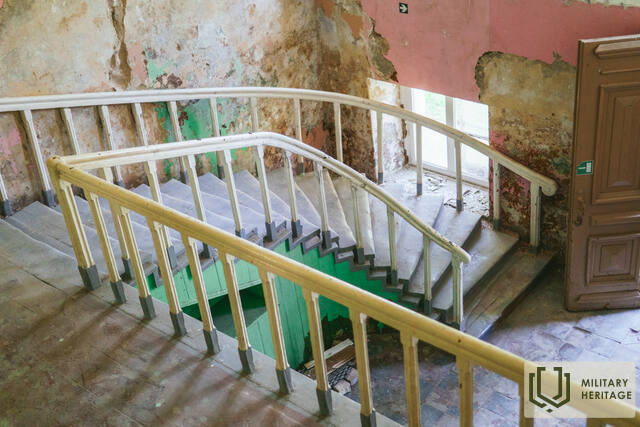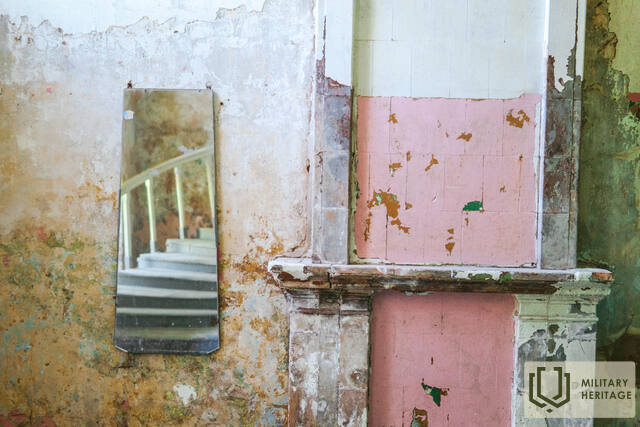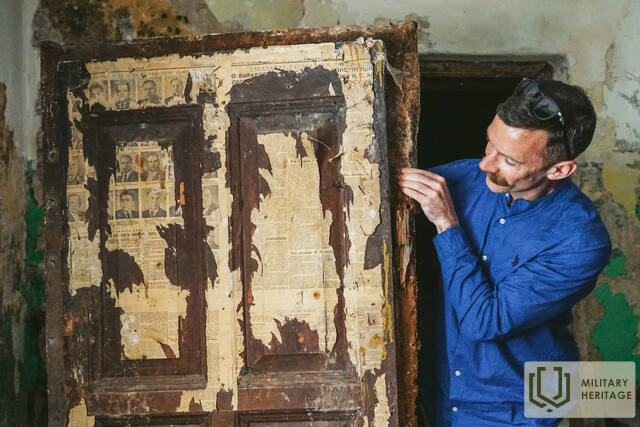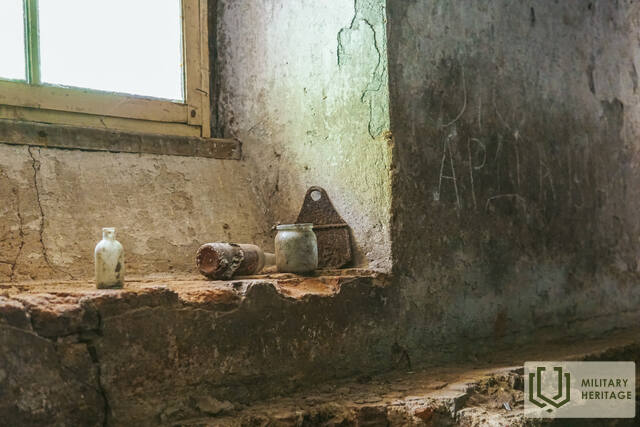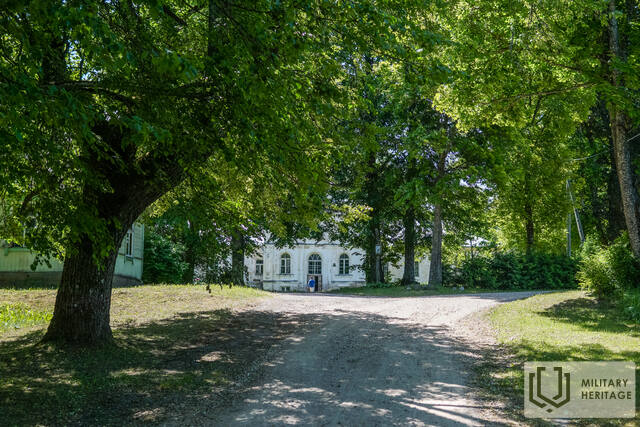Ārdava (Jezufinova) Manor Infrastructure

Ārdava was an important military and strategic location during World War II, where both partisan activities and other military events took place.
The Neo-Renaissance manor house was originally built between 1860 and 1863 for the noble Mol family. The owner of the manor, Vaclav Mol, had established a private school for his own children and the children of his servants, where he taught Latvian and Russian, writing, and arithmetic.
In 1922, the Ārdava Elementary School was established in the manor house, which existed until 2003.
The school was the center of life in Ārdava – it also served as a public house and event venue for weddings, celebrations and similar events, and was active all year round. Until the German occupation, the manor was lit by kerosene lamps, later a generator was installed in the manor. Rainwater was collected from the gutters and used for washing clothes, as it did not contain lime and made clothes softer. For heating, each room had wood-burning stoves and a wood-burning heating stove with stone chimneys, which accumulated hot air and retained heat.
Life at Ārdava Elementary School in Ārdava Manor from 1934 to 1943, as recounted by Lidija Odeiko and Vija Liepa (née Odeiko) to their family.
Helen Broka (1905–1975) was the daughter of a farmer from the village of Lieli Leimaņi. Alberts Odeiko (1903–1938) was the son of a factory worker from Riga. Helen and Alberts met in Aglona and got married there in 1927. They lived in the village of Somerset, where their eldest daughter Lidija was born in 1930, and their second daughter Vija in 1932. In 1934, Helen was appointed headmistress of the Ārdava Manor Primary School.
Wartime events: 1940
After the Soviet invasion in the spring of 1940, Helen was removed from her position as principal, but she was allowed to remain as a teacher. A teacher named Jachuk took over as principal in her place.
Wartime events: 1941
The family's living quarters were in the left wing of the building. In the summer of 1941, when the Germans invaded and drove out the Soviets, Helen and the girls were staying with Donāt in Lielai Leimaņi. During this turbulent time, they were forced to hide in the forest. When they finally returned home to Ārdava (after the Germans had completed their invasion of Latvia in July), they discovered that Helen had been included in the Soviet list of mass deportations for June 1941.
The German headquarters were located in Ārdava in the summer of 1941, after the German army occupied the area, shortly after the capture of Riga in July 1941. The Ārdava manor, which had previously been the building of the local elementary school, was used for the needs of German troops. The Germans set up their headquarters in the manor, because the nearby railway led directly to the Russian front. Most of them were not soldiers, but military personnel who dealt with supplies and logistics. Electricity was installed, and fuel drums for the generator were buried on the road leading to the house. Water tanks were installed outside, providing running water for drinking and cooking for the first time.
Wartime events: 1942
On June 17, 1942, an explosion occurred at the Ārdava station, which was organized by the Red Partisans, marking the events of June 17, 1940 and the Red Army's invasion of Latvia. An ammunition train, which was heading to the Russian front, exploded at the Ārdava station, approximately 0.5 km from the Ārdava manor. As a result of the explosion, the railway station was destroyed and there were human casualties - the Mickāns family died: their son, a journalist and writer Vincents Mickāns, his father, a railway worker Joachims Mickāns, and their mother Petronelija Mickāne, who died of injuries. The entire family is buried in the Aglona cemetery.[1] According to the memoirs of the residents of Ārdava, it was planned to blow up the school building when the Germans retreated, because mines found in the basement by the Ārdava partisans.
Wartime events: 1944
When the German Eastern Front began to collapse in August 1944 and Soviet forces were approaching, Helen took the girls to her parents' home to ensure their safety. She herself returned to Ārdava, where the Germans were preparing to retreat. Knowing that Helen was a target for the Soviets, the Germans offered her to go with them and suggested that she bring the children so that the family would not be separated. They packed their belongings in blankets and boarded a truck that took them to Daugavpils. From there, the Germans took them to a farm in Vidzeme, where they hid for about a week until the soldiers returned and took them to Riga. The Odeiko family went to Vienna, Austria, where Helen found work, while the girls lived on a farm in nearby Ramsau. In the spring, they moved to a farm near Fleischwangen, Germany, and after the war ended, the girls were able to resume their Latvian school in nearby Ebenweiler. Helen and Vija went to the United States in 1950.
The longest-serving national partisan in Latvia, Jānis Pīnups, lived in Ārdava. He was mobilized into the Red Army in 1944, from which he deserted and hid in the forest of Pelēči parish in Latgale for more than fifty years, and legalized himself only on May 9, 1995, when he was already seventy years old. He was called the last "World War II forest brother in Latvia", although he did not participate in the armed struggle against the Soviet regime. Jānis Pīnups' life story has been used as material in Jānis Baložs's dramaturgy for the Latvian National Theatre's play "Mežainis".
[1] sources: “The third victim of the tragic accident has died.” Daugavas Vēstnesis. 1942. June 26., “Vincents Mickāns laid in the lap of the earth.” Daugavas Vēstnesis. 1942. June 20., Mazjānis, R. “Vincents Mickāns (photo).” Daugavas Vēstnesis. 1942. June 21.
Used sources and references:
[1] sources: “The third victim of the tragic accident has died.” Daugavas Vēstnesis. 1942. June 26., “Vincents Mickāns laid in the lap of the earth.” Daugavas Vēstnesis. 1942. June 20., Mazjānis, R. “Vincents Mickāns (photo).” Daugavas Vēstnesis. 1942. June 21.
Information and testimonies were collected by the owners of the Ārdava Manor.




